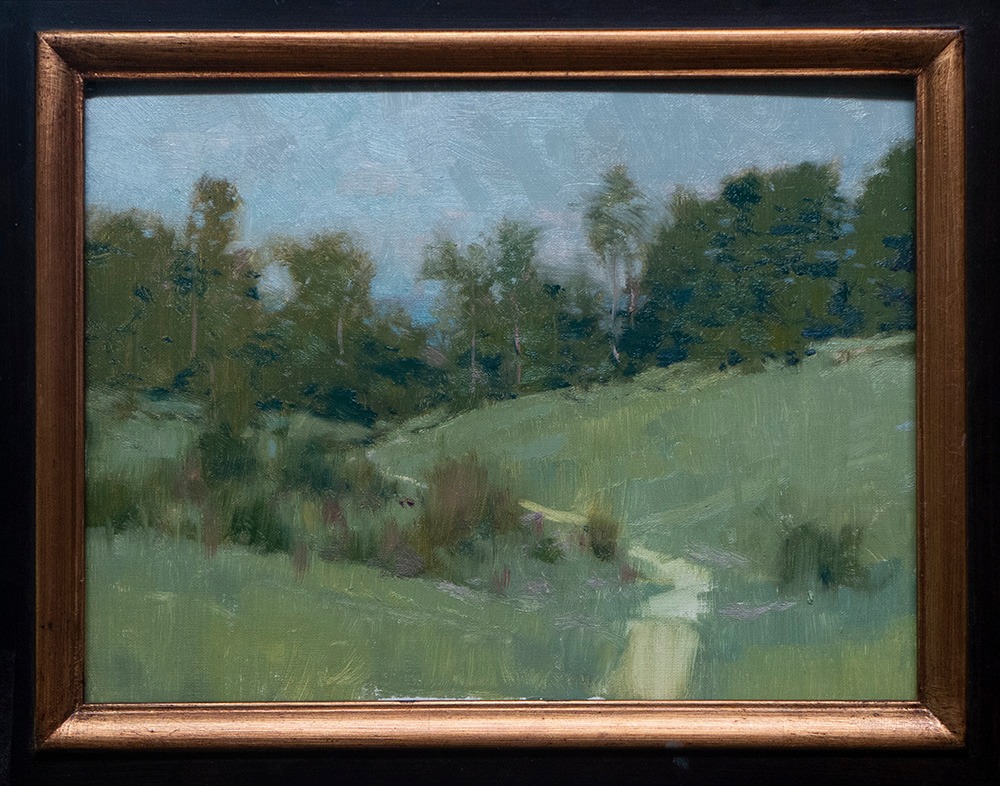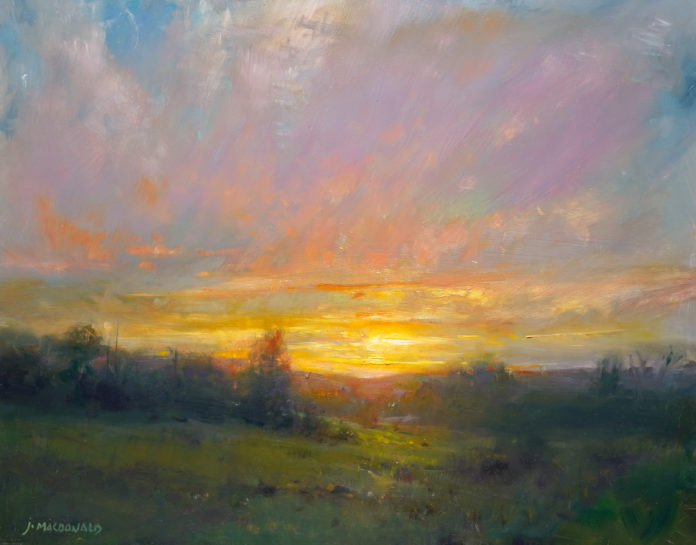American landscape painter John MacDonald (coming soon to Realism Live!) shares five things that have become normal throughout his life as a professional artist.
From Somewhat Odd to Totally Normal
by John MacDonald
(jmacdonald.com)
1. Failure. Failing again and again. Most non-painters have no idea how important failing is nor how often it happens even among the best painters. They don’t realize that when they see paintings in a gallery or publications, they’re seeing only the successes. Few have any idea how many failures lie behind each success.
2. Speaking of failing, I have a process I call “Creative Destruction.” When I’m painting and it’s not working and I reach a point when I know it’s time to give up or to try something entirely different in the painting, I reach for paper towels. Using a paper towel – a single sheet or sometimes the surface of the entire roll, I carefully wipe each large shape of the painting (sky, trees, meadows, etc.), smearing and removing the paint from the canvas. Reduced to simple, blurred shapes, it often brings the painting back to the state of the block-in, allowing me to take it in a entirely different, and hopefully more successful, direction.
3. Thinking. I think a lot while I’m painting – taking a step back after every several brushstrokes to see if the decisions worked. The painting may look as if it were painted spontaneously but that’s rarely the case.
4. Changing What Was. Painting isn’t only about what we see. And what we see – whether from a photo or from life – is just the raw visual material for a painting. I love taking photos as reference and then changing the palette, time of day, or even the season. It’s such fun to take a photo of a summer daytime scene and turn it into a winter nocturne. I’m not as interested in capturing a real place as I am a real mood.

5. For me, painting is a process of adding and subtracting. I’m terrible at moving thick piles of paint around the canvas. I prefer painting in thin layers and often, in the course of the painting, will spend as much time removing paint as adding it. I often paint things in only to realize they need to be wiped out.
Learn from John MacDonald this November at the 3rd Annual Realism Live virtual art conference. Save years of struggle and frustration by discovering techniques revealed by some of the world’s top artists in just 3-days during Realism Live, the largest online art training event November 10-12 with beginner day on November 9th: RealismLive.com
Related:
No matter what level or type of artist you are, the benefits you can glean from John MacDonald’s deep dive into process are invaluable. While there are numerous lessons that examine specific materials and teach little-known techniques, few explore in such depth the very essentials of painting. Any artist will come to a greater appreciation for and understanding of what makes for a successful painting. Although based in the fundamentals, MacDonald’s Creating Dynamic Landscapes video workshop provides tips around subjects even the most expert painters can appreciate, including:
- Composition, values, color, edges, and details
- The pros and cons of using photographs for reference
- The pros and cons of plein air painting
- Copying photos versus creating a painting
- The five components of a painting
See more about how to paint landscapes here.





